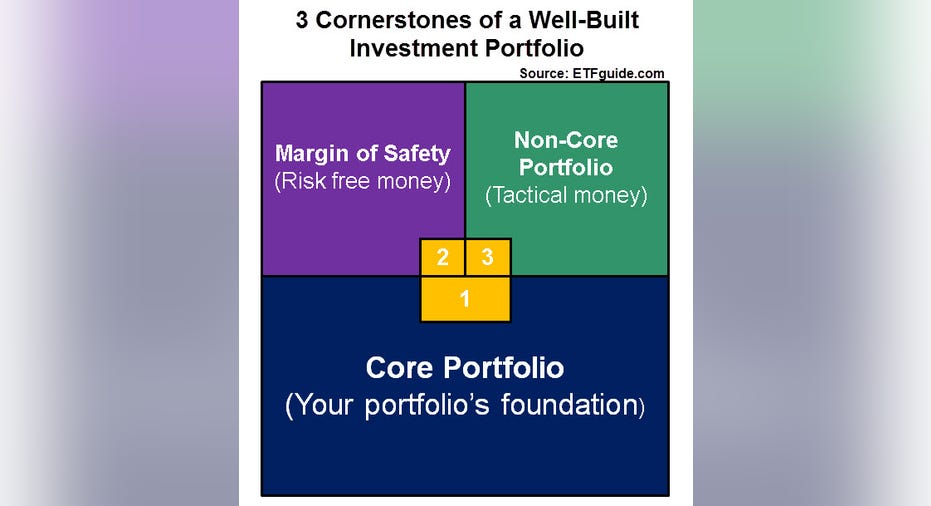How Should Your Non-Core Portfolio Look?

I’ve written extensively about the role of an investor’s non-core portfolio. It’s one of the three cornerstones of a well-built portfolio (see figure below) and it always plays a complementary role to the much larger core portfolio and a person’s margin of safety container. If used properly, the non-core portfolio can greatly enhance an investor’s total returns. On the other hand, if used improperly, the non-core portfolio can dramatically change the risk and volatility profile of the portfolio.
(Audio) A Portrait of Shareholders + Non-core Portfolio 101
For the record, an investment portfolio with authentic diversification will always have broad exposure to the five major asset classes: stocks (NYSEARCA:VT), bonds (NYSEARCA:AGG), commodities (NYSEARCA:DBC), real estate (NYSEARCA:RWO), and cash. Obtaining this broad diversification should be an investor’s priority, meaning it comes before any consideration or thought is given to the non-core portfolio.
The key characteristic of a person’s non-core portfolio is that it owns non-core asset classes. These types of assets are typically tactical, under-diversified, and can include sub-asset groups within core asset classes. (Example: Gold is a sub-asset group within the larger and core commodities asset class.)
Here’s a quick rundown of non-core assets:
–Currencies –Derivatives –Individual stocks –Active mutual funds –Leveraged Long/Short ETFs –Sector Funds –Hedge funds –Private equity –Venture capital –Volatility
When people begin to use non-core asset classes as core building blocks within their portfolio is usually when portfolio problems happen. I talk about some of these problems in my online course “How to Fix Hidden Flaws Inside Your Portfolio. ” The whole point is to identify these problems before they negatively impact your financial situation.
In summary, you should not own non-core asset classes inside your core portfolio. Why? Because your non-core portfolio is just an appetizer that complements the rest of your portfolio holdings which encompass the much bigger main meal.



















